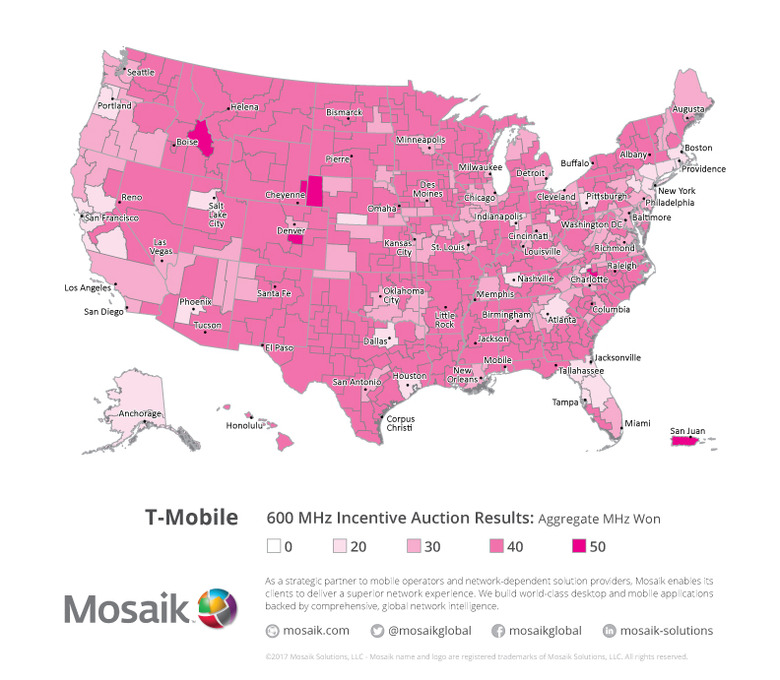T-Mobile Is Updating Its Network Faster Than Apple Can Update iPhones
T-Mobile is bored of being the butt of jokes about bad cell service, and it's spending billions of dollars over the next couple years to change things. In order to catch up to the coverage of Verizon and AT&T, T-Mobile recently spent $8 billion on licenses prime low-band spectrum to improve coverage indoors and in rural areas.
The new spectrum is being freed up by relocating old analog TV stations, so we were expecting to wait years for the first deployment of T-Mobile's 600MHz network. But as it happens, the first new areas should be getting service this summer — before any new phones actually support the new frequency.
The FCC formally granted the licenses for T-Mobile's shiny new spectrum yesterday, which means the company can now get on with the building process. Deploying new spectrum isn't easy — it requires T-Mobile and telecoms companies to design and certify new transmitters, install them on towers, and pass FCC tests. T-Mobile's going to have to work fast to get everything in place for testing this summer, with commerical use by the end of the year a particularly ambitious goal.
It's also worth noting that T-Mobile is only talking about getting a few test sites up by the end of the year. In most areas where T-Mobile bought spectrum, the network will have to wait for TV stations to move off the spectrum to be able to use it. The video below shows T-Mobile's roadmap for when and where it will be rolling out the new spectrum.
This brings us to the biggest problem: device availability. Because 600MHz is a new spectrum for cellphone networks, no current devices have radios that support it. Although chipset manufacturers like Qualcomm and Intel are working overtime to produce new chipsets, there's a long lead time on getting new silicon into new devices. Full-scale production of new devices has to start months before launch, and the final design of chips needs to be set in stone a long time before that.
We've already heard reliable rumors that the iPhone 8 won't support any particularly exciting new wireless technologies like millimeter-wave 5G, and there's a decent chance that it won't even support 600Mhz. That means iPhone users will have to wait until the end of 2018 to get a device compatible with T-Mobile's new network.
On the Android side, things are a little sunnier. Most flagship Android devices use Qualcomm's latest chipset, which is currently the Snapdragon 835. You can expect a new Snapdragon — say, the 840 — to be announced early next year, and ship in devices around February or March.
Of course, just enabling support for 600MHz isn't terribly hard, so it's possible that we'll see Android devices come out late this year that support 600MHz. The obvious candidates are the Galaxy Note 8 and Google Pixel 2, both of which are premium devices that should be released in the fall.
